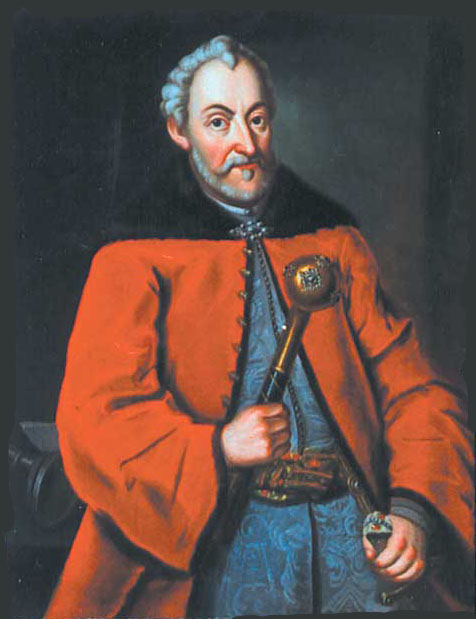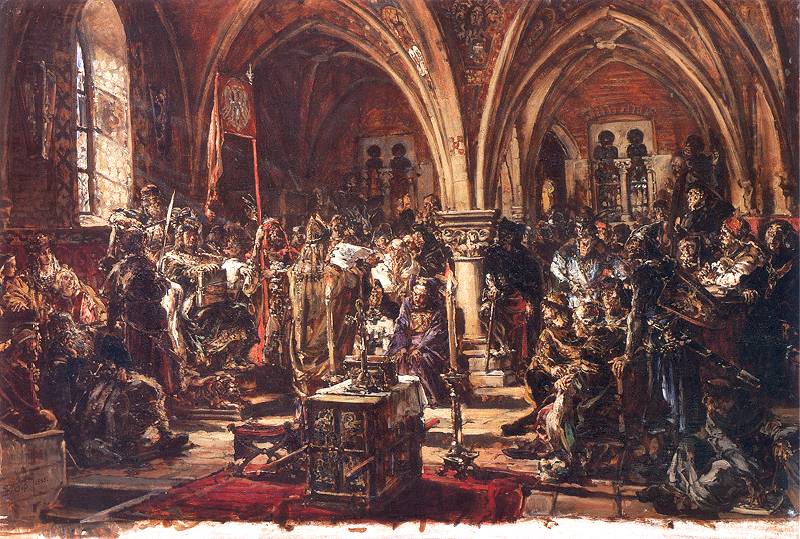|
Battle Of Ţuţora (1620)
The Battle of Cecora (also known as the ''Battle of Țuțora'') was a battle during the Polish–Ottoman War (1620–21) between the Polish–Lithuanian Commonwealth (aided by rebel Moldavian troops) and Ottoman forces (backed by Nogais), fought from 17 September to 7 October 1620 in Moldavia, near the Prut River. Prelude Because of the failure of Commonwealth diplomatic mission to Constantinople, and violations of the Treaty of Busza by both sides (as Cossacks and Tatars continued their raids across the borders), relations between the Ottomans and the Commonwealth rapidly deteriorated in early 1620. Both sides began preparing for war, as neither was quite ready for it at the time. The Ottomans declared war against Poland in 1620 and planned to attack in the spring of 1621.Hrushevsky, M., 1999, The History of the Ukrainian Cossacks, Vol. 1, The Cossack Age to 1625, Edmonton: Canadian Institute of Ukrainian Studies Press, The Commonwealth Sejm denied most funds the hetmans ... [...More Info...] [...Related Items...] OR: [Wikipedia] [Google] [Baidu] |
Moldavian Magnate Wars
The Moldavian Magnate Wars, or Moldavian Ventures, refer to the period at the end of the 16th century and the beginning of the 17th century when the magnates of the Polish–Lithuanian Commonwealth intervened in the affairs of Moldavia, clashing with the Habsburgs and the Ottoman Empire for domination and influence over the principality. The Magnate Wars (1593–1617) Causes Jan Zamoyski, Polish grand crown chancellor ( kanclerz) and military commander (grand crown hetman), known for his opposition towards the Habsburgs, had been a vocal supporter of Commonwealth expansion in the southern direction. Since the early plans made by Commonwealth King Stefan Batory for the war against the Ottomans, Zamoyski supported them, viewing those plans as a good long-term strategy for the Commonwealth. Any policy that was against the Ottomans was also supported by the Holy See, and Pope Sixtus V strongly expressed his support for any war between the Commonwealth and the Ottomans. Thre ... [...More Info...] [...Related Items...] OR: [Wikipedia] [Google] [Baidu] |
Stanisław Koniecpolski
Stanisław Koniecpolski (1591 – 11 March 1646) was a Polish military commander, regarded as one of the most talented and capable in the History of Poland in the Early Modern era (1569–1795), history of the Polish–Lithuanian Commonwealth. He was also a magnate, a royal official (''starosta''), a castellan, a member of the Polish nobility (''szlachta''), and the ''voivode'' (governor) of Sandomierz from 1625 until his death. He led many successful military campaigns against rebelling Cossacks and invading Tatars. From 1618 he held the rank of Field Crown Hetman before becoming the Grand Crown Hetman, the commander-in-chief, military commander second only to the King, in 1632. Koniecpolski's life was one of almost constant warfare. Before he had reached the age of 20, he had fought in the Dymitriads and the Moldavian Magnate Wars. Later, in 1620, he took part in the Battle of Cecora (1620), Battle of Cecora, during which he was captured by Ottoman Empire, Ottoman forces. Aft ... [...More Info...] [...Related Items...] OR: [Wikipedia] [Google] [Baidu] |
Sejm
The Sejm (English: , Polish: ), officially known as the Sejm of the Republic of Poland (Polish: ''Sejm Rzeczypospolitej Polskiej''), is the lower house of the bicameral parliament of Poland. The Sejm has been the highest governing body of the Third Polish Republic since the transition of government in 1989. Along with the upper house of parliament, the Senate, it forms the national legislature in Poland known as National Assembly ( pl, Zgromadzenie Narodowe). The Sejm is composed of 460 deputies (singular ''deputowany'' or ''poseł'' – "envoy") elected every four years by a universal ballot. The Sejm is presided over by a speaker called the "Marshal of the Sejm" (''Marszałek Sejmu''). In the Kingdom of Poland, the term "''Sejm''" referred to an entire two-chamber parliament, comprising the Chamber of Deputies ( pl, Izba Poselska), the Senate and the King. It was thus a three-estate parliament. The 1573 Henrician Articles strengthened the assembly's jurisdiction, makin ... [...More Info...] [...Related Items...] OR: [Wikipedia] [Google] [Baidu] |
Tatars
The Tatars ()Tatar in the Collins English Dictionary is an umbrella term for different Turkic ethnic groups bearing the name "Tatar". Initially, the ethnonym ''Tatar'' possibly referred to the . That confederation was eventually incorporated into the when unified the various steppe tr ... [...More Info...] [...Related Items...] OR: [Wikipedia] [Google] [Baidu] |
Cossacks
The Cossacks , es, cosaco , et, Kasakad, cazacii , fi, Kasakat, cazacii , french: cosaques , hu, kozákok, cazacii , it, cosacchi , orv, коза́ки, pl, Kozacy , pt, cossacos , ro, cazaci , russian: казаки́ or , sk, kozáci , uk, козаки́ are a predominantly East Slavic Orthodox Christian people originating in the Pontic–Caspian steppe of Ukraine and southern Russia. Historically, they were a semi-nomadic and semi-militarized people, who, while under the nominal suzerainty of various Eastern European states at the time, were allowed a great degree of self-governance in exchange for military service. Although numerous linguistic and religious groups came together to form the Cossacks, most of them coalesced and became East Slavic-speaking Orthodox Christians. The Cossacks were particularly noted for holding democratic traditions. The rulers of the Polish-Lithuanian Commonwealth and Russian Empire endowed Cossacks with certain sp ... [...More Info...] [...Related Items...] OR: [Wikipedia] [Google] [Baidu] |
Treaty Of Busza
The Peace of Busza (Busha, Bose) also known as the Treaty of Jaruga was negotiated by Stanisław Żółkiewski of the Polish–Lithuanian Commonwealth and Iskender Pasha of the Ottoman Empire in Busza ( Busha or Bose) near the Jaruga and Dniester rivers on 23 September 1617. Polish and Ottoman armies met, but decided to negotiate, instead of to fight. In this peace treaty Polish–Lithuanian Commonwealth agreed to cede the Khotyn to the Ottomans and to stop its interference in Moldavia. That 1617 treaty stated that Poland would not interfere in the internal affairs of Ottoman vassals in Transylvania, Moldavia and Wallachia, the Commonwealth was to prevent Cossacks from raiding lands in the Ottoman Empire, while ceding Khotyn. In return, the Ottoman Empire promised to stop Tatar raids. The Ottoman Empire also had the right to interfere in Transylvania, Moldavia and Wallachia and select the rulers of that region. The treaty would be violated by both sides, as Cossacks and Tat ... [...More Info...] [...Related Items...] OR: [Wikipedia] [Google] [Baidu] |
Constantinople
la, Constantinopolis ota, قسطنطينيه , alternate_name = Byzantion (earlier Greek name), Nova Roma ("New Rome"), Miklagard/Miklagarth (Old Norse), Tsargrad ( Slavic), Qustantiniya (Arabic), Basileuousa ("Queen of Cities"), Megalopolis ("the Great City"), Πόλις ("the City"), Kostantiniyye or Konstantinopolis ( Turkish) , image = Byzantine Constantinople-en.png , alt = , caption = Map of Constantinople in the Byzantine period, corresponding to the modern-day Fatih district of Istanbul , map_type = Istanbul#Turkey Marmara#Turkey , map_alt = A map of Byzantine Istanbul. , map_size = 275 , map_caption = Constantinople was founded on the former site of the Greek colony of Byzantion, which today is known as Istanbul in Turkey. , coordinates = , location = Fatih, İstanbul, Turkey , region = Marmara Region , type = Imperial city , part_of = , length = , width ... [...More Info...] [...Related Items...] OR: [Wikipedia] [Google] [Baidu] |
Diplomatic Mission
A diplomatic mission or foreign mission is a group of people from a state or organization present in another state to represent the sending state or organization officially in the receiving or host state. In practice, the phrase usually denotes an embassy, which is the main office of a country's diplomatic representatives to another country; it is usually, but not necessarily, based in the receiving state's capital city. Consulates, on the other hand, are smaller diplomatic missions that are normally located in major cities of the receiving state (but can be located in the capital, typically when the sending country has no embassy in the receiving state). As well as being a diplomatic mission to the country in which it is situated, an embassy may also be a nonresident permanent mission to one or more other countries. The term embassy is sometimes used interchangeably with chancery, the physical office or site of a diplomatic mission. Consequently, the terms "embassy reside ... [...More Info...] [...Related Items...] OR: [Wikipedia] [Google] [Baidu] |
Nogais
The Nogais ( Nogai: Ногай, , Ногайлар, ) are a Turkic ethnic group who live in the North Caucasus region. Most are found in Northern Dagestan and Stavropol Krai, as well as in Karachay-Cherkessia and Astrakhan Oblast; some also live in Chechnya, Dobruja (Romania and Bulgaria), Turkey, Kazakhstan, Uzbekistan, Ukraine and a small Nogai diaspora is found in Jordan. They speak the Nogai language and are descendants of various Mongolic and Turkic tribes who formed the Nogai Horde. There are seven main groups of Nogais: the Ak Nogai, the Karagash, the Kuban-Nogai, the Kundraw-Nogai, the Qara-Nogai, the Utars and the Yurt-Nogai. Name For a long time it was believed that their namesake founder was Nogai Khan ( 'dog' in Mongolian), a grandson of Jochi. Nogai (d. 1299–1300) was the de facto ruler, kingmaker, and briefly self-proclaimed khan of the Golden Horde. Geographic distribution In the 1990s, 65,000 were still living in the Northern Caucasus, divided into ... [...More Info...] [...Related Items...] OR: [Wikipedia] [Google] [Baidu] |
Gabor Bethlen
Gabriel Bethlen ( hu, Bethlen Gábor; 15 November 1580 – 15 November 1629) was Prince of Transylvania from 1613 to 1629 and Duke of Opole from 1622 to 1625. He was also King-elect of Hungary from 1620 to 1621, but he never took control of the whole kingdom. Bethlen, supported by the Ottomans, led his Calvinist principality against the Habsburgs and their Catholic allies. Early life Gabriel was the elder of the two sons of Farkas Bethlen de Iktár and Druzsiána Lázár de Szárhegy. Gabriel was born in his father's estate, Marosillye (now Ilia in Romania), on 15 November 1580. Farkas Bethlen was a Hungarian nobleman who lost his ancestral estate, Iktár (now Ictar-Budinț in Romania), due to the Ottoman occupation of the central territories of the Kingdom of Hungary. Stephen Báthory, Prince of Transylvania, granted Marosillye to him and made him captain-general of the principality. Druzsiána Lázár was descended from a Székely noble family. Both Farkas Bethlen and ... [...More Info...] [...Related Items...] OR: [Wikipedia] [Google] [Baidu] |
Transsylvanian Banner
Transylvania ( ro, Ardeal or ; hu, Erdély; german: Siebenbürgen) is a historical and cultural region in Central Europe, encompassing central Romania. To the east and south its natural border is the Carpathian Mountains, and to the west the Apuseni Mountains. Broader definitions of Transylvania also include the western and northwestern Romanian regions of Crișana and Maramureș, and occasionally Banat. Transylvania is known for the scenery of its Carpathian landscape and its rich history. It also contains Romania's second-largest city, Cluj-Napoca, and other iconic cities and towns such as Brașov, Sibiu, Târgu Mureș, Alba Iulia and Sighișoara. It is also the home of some of Romania's UNESCO World Heritage Sites such as the Villages with fortified churches, the Historic Centre of Sighișoara, the Dacian Fortresses of the Orăștie Mountains and the Roșia Montană Mining Cultural Landscape. It was under the rule of the Agathyrsi, part of the Dacian Kingdom (168 BC–106 ... [...More Info...] [...Related Items...] OR: [Wikipedia] [Google] [Baidu] |








